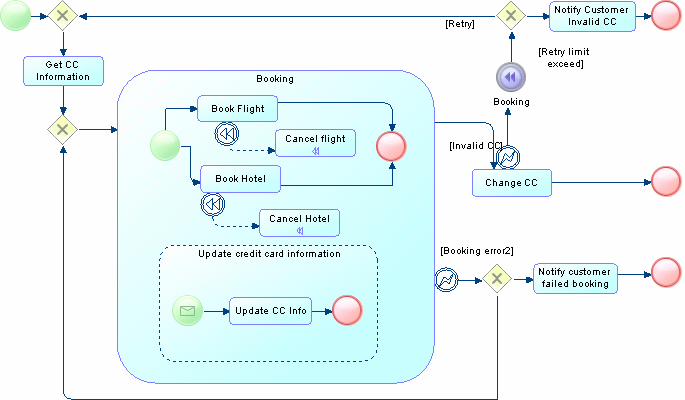A business process model (BPM) helps you identify, describe, and decompose business processes. You can analyze your system at various levels of detail, and focus alternatively on control flow (the sequence of execution) or data flow (the exchange of data). You can use BPEL, BPMN, and many other process languages.

Creating a Business Process Model
- To create a new, empty BPM, select , and choose Business Process Model.
- To reverse engineer a new BPM from process language files, select .
The following types of diagrams are available:
- A business process diagram (or process flow diagram) provides a graphical view of the control flow (the sequence of execution) or data flow (the exchange of data) between processes at any level in your system.
- A process hierarchy diagram (or functional decomposition diagram) provides a graphical view of the functions of a system and helps you decompose them into a tree of sub-processes.
- A process service diagram provides a graphical view of the services, operations, and interfaces available in your system.
Working with Data in a BPM
PowerDesigner provides various methods for linking data in your BPM to data items, entities, tables or classes in other PowerDesigner models:
- To link data in a BPM with other PowerDesigner objects, use the Definition field on the General tab of the data property sheet.
- To export data in a BPM to other PowerDesigner objects, select .
- To import other PowerDesigner objects as data in a BPM, select .
Working with Process Language Definitions
The process language definition file defines features specific to the language being modeled:
- To open the process language definition file in the Resource Editor, select .
- To change the process language to model with, select .
Documentation
For detailed documentation, see Business Process Modeling.